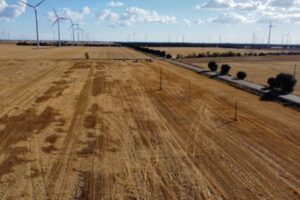For EV virtual power plants, customer buy-in is key

Electric vehicles (EVs) can actually put more net power onto the grid than they take off during peak times, but it all depends on customer buy-in and participation.
William Goldsmith, Global Head of Grid Services for ev.energy, sat down with Mike Casey, president and founder of Tigercomm and co-host of Renewable Energy World’s This Week in Cleantech podcast in the EV Zone at DISTRIBUTECH International 2024 to discuss EVs, virtual power plants, and lessons learned.
EVs have great potential to serve as a distributed, flexible asset, but there’s one main problem: they are owned by regular consumers who have no obligation to let their utility choose when they can charge, or operate them as a virtual power plant.
The solution doesn’t have to be complicated, Goldsmith – in fact it should be the opposite. Financial incentives are a given, but more important than that, Goldsmith argues, is offering customers a proposition that is easy to understand and sign up for. Customers should know exactly what they’re getting into, and what they stand to gain from it.
Utilities don’t have the luxury of waiting around for someone to fix the problem for them – unmanaged EV charging could devastate grids as EV adoption increases. Building the infrastructure necessary to meet EV charging demand is costly, expensive, and complex.
Join us at GridTECH Connect California, June 24-26, 2024, in Newport Beach, CA! With some of the most ambitious sustainability and clean energy goals in the country, California is at the cutting edge of the energy transition while confronting its most cumbersome roadblocks. From electric vehicles to battery storage, microgrids, community solar, and everything in between, attendees will collaborate to advance interconnection procedures and policies in California.
One part of the solution, Goldsmith argues, is adopting one-directional smart charging or active managed charging to reduce peak demand by as much as 50%. Going even further, bi-directional charging can actually balance out the net energy on the grid.
“If we can get around 25% of people to upgrade from managed charging to bidirectional where the vehicle is able to put power back onto the grid, then actually at these peak times, the net EVs will be putting more power onto the grid than they’re taking off, which really makes them the kind of ultimate grid asset,” Goldsmith said.”
Originally published in POWERGRID International.





acel lorenzo mendy